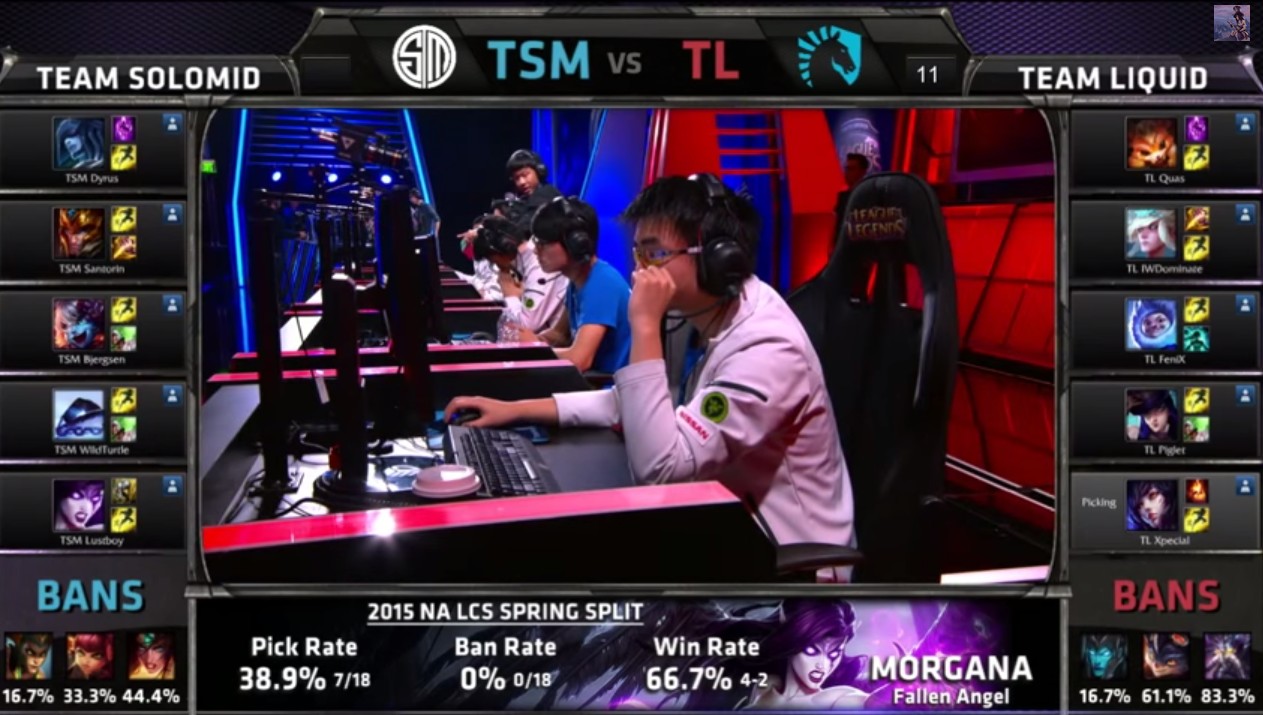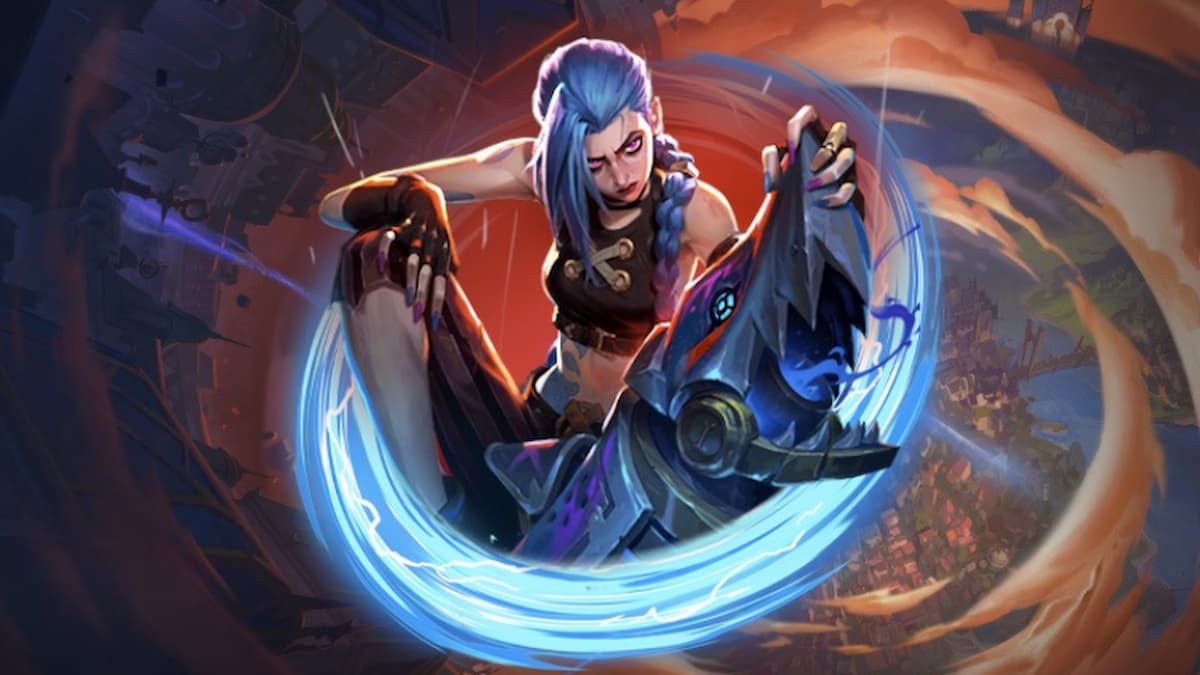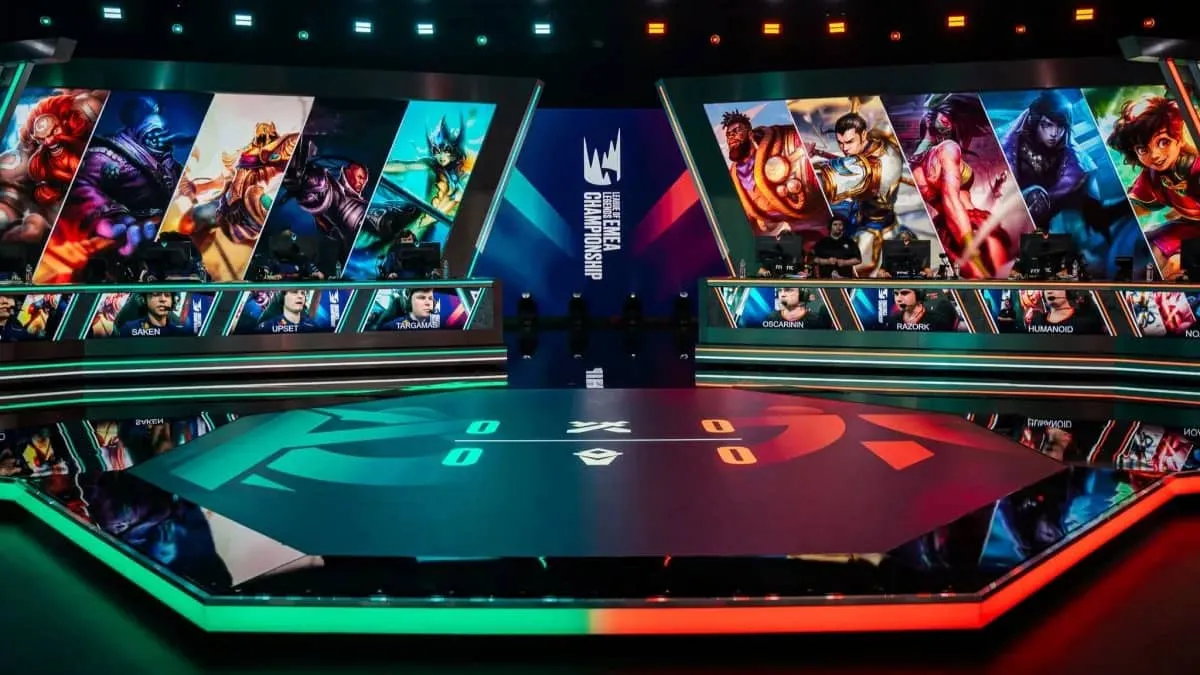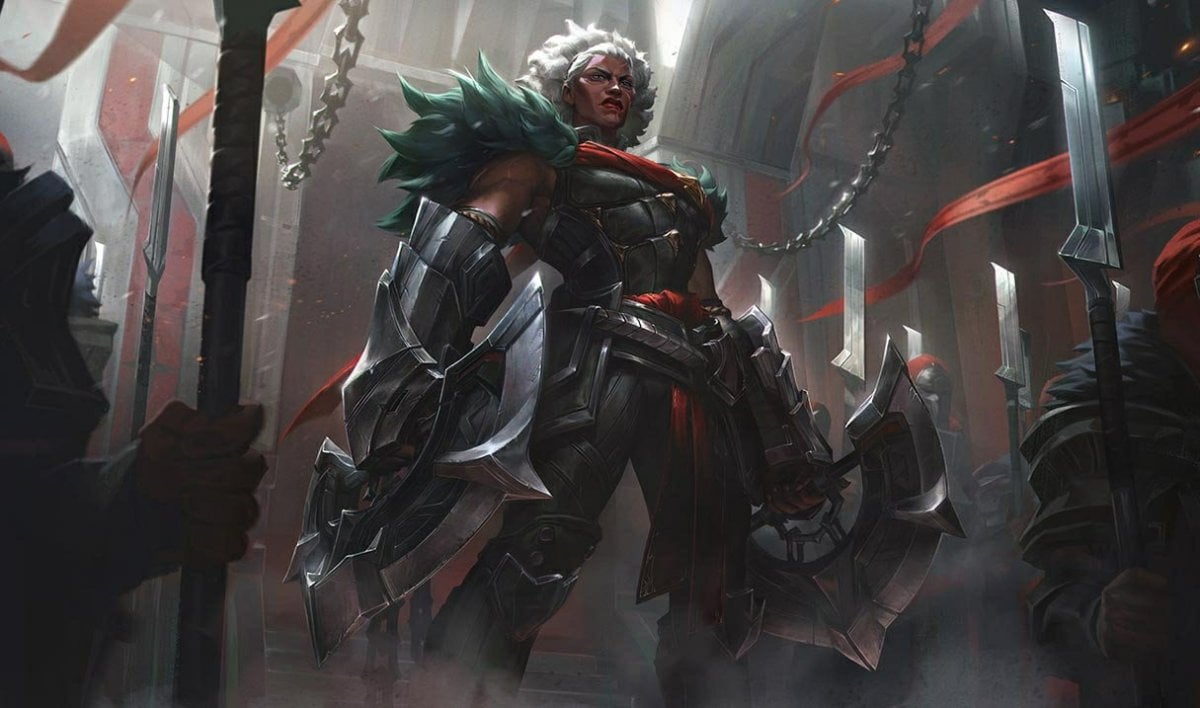One of the things that stood out to me during this last week of LCS was a particular comp that Team Liquid ran in the their game versus TSM:
Look familiar?
Jump back almost a year to early season 4, when junglers were gods and there were only three top lane champs. Team Liquid, then still called Team Curse, ran a similar composition in a game against CLG. Both compositions were fast push comps that included Janna and Nunu; champions who power up the ADC and allow for fast turret killing in the early game. Examining these two games played by the same team (albeit with only two of the same players) allows us an excellent chance to examine how fast pushing as a strategy has evolved over the last year of competitive play in the west, and what its strengths and weaknesses are. While Curse/TL did lose both of the games in question, the first time they ran it they came within a hair’s breadth of winning. In their more recent game, they had lost the game by 12 minutes in. There is much to be learned in both of these games, but first, it is worthwhile to briefly talk about the theory and practice of fast-pushing.
Fast Pushing
Fast pushing, very generally, is a strategy designed around picking early game champions who are good at killing turrets and have strong wave clearing abilities, with the objective of snowballing a lead in the first 15 minutes off of the global gold and map pressure gained from destroying enemy turrets. The strategy generally has a time limit by which point it has to win before the early game centric champions of the fast-pushing team begin to get out-scaled. In order to prevail, the fast-pushing team must snowball a sufficient gold lead to keep their advantage, or translate their objective taking ability into too much map pressure for the other team to handle – usually in the form of taking another inhibitor and then pressuring other lanes in turn. This type of comp needs to be differentiated from the 4-0 turret pushing strategy that evolved during the later part of the 2014 Spring Split, which was more focused on controlling the enemy jungler, protecting your own jungler’s buffs, and reaching the mid-game more quickly through accelerated gold accumulation. Fast push comps must control vision in the enemy jungle to rotate between objectives without getting picked, and the team must display excellent coordination in moving around and controlling the map. When done correctly in the right circumstance, the strategy leaves the enemy team few options in terms of counter-play and the game can be closed out quickly.
In a competitive meta perennially dominated by pick compositions, it is always refreshing to see some strategic variety. However, it’s easy to see why fast push comps are not drafted more often. These types of comp are high risk and easy to counter, the only thing a team defending against one needs to do is survive past 20 minutes. The longer the game runs, the more the early-game centric fast push comp gets out-scaled. The strategy is generally countered by team comps that feature strong wave clear, and teams with good engage options, especially with solid pre-6 engage. To that end it works well when the opposing team possesses neither of these qualities in abundance or have late-game scaling champions. With this in mind, fast-pushing generally works better as a counter-pick comp, with the reveal coming in the 4th or 5th round of drafting to give the opposing team minimal time to react. To that end, an effective pick/ban is really important for fast-pushing. With that in mind, let’s turn to the games:
CLG vs. Curse
Curse picked masterfully here, taking Ziggs, Jinx, and Mundo on draft rounds 1 and 3. These champs are essential to their comp: Ziggs and Jinx for the actual turret taking plus wave clear, and Mundo for his poking and turret tanking ability. All of these were meta champions at the time so their selection wouldn’t have raised any eyebrows. It wasn’t until round 5 that Curse sprung their trap and insta-locked Nunu and Janna, revealing their hand to CLG at a point when CLG have only a support pick left with which to respond. In this game, CLG was fielding Yasuo and Vayne, and have little in the way of wave clear outside Lulu glitterlance. It was the perfect comp to play a fast push into.
One general necessity of a fast push is to initiate a lane-swap to push faster and have a solo-lane champ who can wave clear effectively against the enemy duo lane. At this point in the game’s life, top and mid towers had a 20 damage debuff against champion auto-attacks for the first 8 minutes, so Curse had a bit of an uphill battle in front of them in taking the lane swap. For the first few minutes, they game is about even, the trio of Nunu, Janna, and Jinx taking the CLG top turret quickly but at the cost of their own bottom lane turret. However, a failed pre-6 engage by CLG in the mid lane to break the siege ends in Link’s death and the fall of the last fortified turret. Vision control by Curse allows them to get critical picks on Nien and Doublelift and they take quickly dragon, then bot outer, then bot inner, then mid inner, then top inner.
At this point, they have a 4,000 gold lead and turn their attention to the top lane inhibitor turret. Curse has turned their gold lead into an item advantage and CLG has no way to clear the waves. With nowhere left to turn, Curse force the engage with Link’s Shyvana homeguarding into the fray.
It is at this point that the defensive components of Janna and Nunu’s kits come into play to win the fight for Curse. Shyvana’s Dragon’s Descent is met by an immediate Monsoon, pictured above., This forces CLG to fall back on the Renekton slice and dice combined with Lulu ult and Yasuo ult for initiate. While they get a decent initiate, Nunu’s ult bisects the fight and Quas and Chauster fall. Curse, regroup, take the tower, and begin pounding on the inhibitor
They turn to the inhibitor, but the death timers are so short that CLG is all up before they can kill it. It is at this point that Curse make their fatal mistake.
They have the inhibitor at approximately 20% health, and can kill it if they stick it out and take 2-4 deaths. However, they make the strategic decision to withdraw and keep pressure on the map so CLG can’t threaten an early baron. However, it will be another few minutes before they manage to regroup in top lane to make a second attempt on the inhibitor.
As Curse approach the inhibitor, the engage from CLG comes and Zekent makes a critical error. Link’s Shyvana speeds into the middle of Curse, and Zekent hits the Monsoon. Critically, Link had not used Dragon’s Descent in his approach, but does use it re-engage a moment later.
His engage brings in Chauster on Cop and Voyboy, and both the carries die almost instantly, Quas getting picked up on the back end. CLG capitalize on their sweep by taking a free baron.
This is effectively the end of the game for Curse, and at no time after this are they able to approach the open inhibitor in the top lane. CLG has hit the point where their late-game champions are coming into their own and they can win any fight out in the open. They methodically claw their way back from a 6,000 gold deficit and begin systematically sieging Curse’s turrets. While Curse attempts to fight on, the end is never really in doubt. At 42 minutes in, Curse’s last desperate attempt to get a pick on Chauster and redeem the game ends in a triple kill for Doublelift and CLG take the nexus.
How might have this game have ended differently? Why didn’t the fast push work? Two salient points emerge on re-examination of the game: the decision to abandon the inhibitor and then the misplayed fight in the second attempt to siege it. Zekent received a lot of criticism in the immediate aftermath of the game for his misplay on Janna. However, even if Link’s Shyvana had been ejected from the fray, I believe CLG probably would have found a way to engage between Renekton and Lulu. Moreover, the fight took place around 22 minutes, nearly 5 minutes after the first battle in the top lane. Curse took too much time getting back top and by that point some essential items had been completed on CLG, notably a Sunfire Cape on Renekton and Spirit of the Ancient Golem on Shyvana. Instead of waiting to take the same fight again 5 minutes later, the Curse team should have taken a couple losses and destroyed the inhibitor on the first go.
It’s easy to criticize with the benefit of hindsight, so I won’t pretend the choice between leaving and maintaining pressure on baron, and staying to kill the inhibitor but possibly giving up a free objective was an easy one. However, with the the clock ticking down and the viability of the fast push comp waning quickly, a little more risk-taking might have been justified on the part of Curse. However, this game does show us how effortlessly a fast push comp can control the map and accumulate a potentially insurmountable gold lead early if played well. Which brings us to a year later.
TSM vs. Team Liquid
By contrast to their superb game with a fast push comp in 2014, this last weekend’s latest incarnation was lackluster to say the least. Liquid locked in Nunu on the fourth round of the draft, tipping their hand. At this point, TSM know what’s going on, and have two picks (mid and support) left to counter the selection. However, most problematic for Liquid, the TSM team already has Lissandra and Jarvan, two champions who dive well and have excellent pre-six engage. Even the combination of Janna and Nunu is going to have problems peeling both off the carry. Seeing the comp Liquid wants to play, TSM grabbed Xerath for their mid lane and Morgana for support, adding with both significantly more ways to engage and clear waves. At this point, the Team Liquid comp is already in trouble, and sieging will not work against a team with as many ways to wave clear and break a siege as TSM. All TSM had to do to win was effectively respond to Liquid’s map movements, and go even before the 15 minute mark.
The game really begins to go downhill for Liquid when they don’t get the lane swap they need. Wanting to keep Tristana out of the lane vs. Caitlyn, TSM send their duo bot, assuming Liquid will send their own duo lane top. However, Liquid assumes a double bluff and send their duo lane bot as well. The net result is neither initially get the lane they want. However, TSM is willing to lose a little CS to get Tristana out of the lane, and they transfer Dyrus’s Lissandra down to face Piglet and Xpecial. The pairing of Morgana and Lissandra, with tons of early wave clear, keeps Liquid off the bottom lane tower with ease and force an early back from Piglet due to the harass he’s suffered.
With the bottom lane already going against Liquid, TSM swap Lustboy to top and their duo lane is actually able to get their tower down before Liquid gets their first one down. It is not until 9:18 that IWillDominate shows in bot lane and allows them to take the turret they need to get their snowball rolling. Why Dominate did not come to the lane sooner to create map pressure is hard to tell without having access to comms, but by staying in his own jungle and simply farming for the first several minutes, he squandered some of the map pressure Team Liquid might have had otherwise.
Attempting to redeem the situation, Team Liquid group Cait, Janna, and Nunu up and begin moving them down top lane. Dyrus responds by hanging out to defend the inner turret and TSM move to pressure the rest of the map, putting J4 and Xerath in mid vs. Ahri and Tristana and Morgana in bot vs. Gnar. Instead of gaining a turret advantage with their superior pushers, TSM was able to respond to Liquid’s move on the opposite side of the map with a turret of their own.
At this point it is 11 minutes in and despite being a dragon up due to their better early game, Team Liquid is actually a little behind in gold and even in turrets. At this point, they have a potential for a power-play in top with a 3-1 man advantage and a wave of minions. Here’s what happens.
Dyrus, on Lissandra, simply clears the entire wave in a manner that would have been impossible for any viable top lane champ in the spring of 2014 to do. The siege ends, and Team Liquid has to retreat. Moreover, they are nearly caught out by the combination of Lissandra/Jarvan and Piglet/Xpecial barely make it out alive. At this point, is barely 12 minutes in, the score is 0-0, and TSM only has a 300 gold lead, but the game is as good as over. Barring huge misplays from TSM, they will simply outscale a comp that includes Caitlyn and Nunu. And indeed, TSM goes on gradually pushing Liquid in until they destroy their Nexus around the 38 minute mark.
Fast Pushing, Then and Now
With the fortification bonus on turrets gone, now must be a golden age for fast pushes, you say. However, if TL’s attempt tells us anything, it’s that traditional fast pushing with the likes of Janna/Nunu/Cait is facing severe problems at the moment. The reason for this decline is the two-fold, but centers around the top lane meta of season 5. The three most played champions in the top lane at the time of the CLG/Curse game were Renekton, Mundo, and Shyvana. At present, the top three are Gnar, Lissandra, and Rumble. These champions, Alongside flex picks like Azir, are bringing to top lane something it has traditionally not had: effective wave clear. Now more than ever, is a golden age of high damage top laners, and as a result, fast pushing is less effective. The strategy has always relied on abusing the lack of wave clear in one of the solo-lanes, and at this point in the competitive meta, both solo lanes are likely to possess it. Moreover, the other thing causing problems for fast pushes these days is the new practice of running your support with your top laner. Since most of the current competitive ADCs have an escape, when faced with a losing duo lane matchup, more and more teams are sending their ADC to the solo lane and leaving the support with the top laner; a deadly roadblock to any team seeking to fast push the lane.
While Team Liquid did not pick their fast push comp into an ideal situation for it, they suffered equally from trying to play the comp into a meta that does not favor it. The rise of teams with lots of wave clear makes sieging turrets increasingly difficult and fast push strategies suffer the most in this competitive meta.
With the removal of DFG and the consequent nerf to assassins and pick comps, we may increasingly see drawn out games with teams unable to effectively siege enemy turrets nor pick enemies when they stray into the jungle. One thing is certain though, as long as the top lane meta remains as damage and wave clear focused as it currently is, fast pushing comps will be difficult to pull off and the glory days of such teams from the spring of 2014 will remain a distant memory.














Published: Feb 4, 2015 10:31 pm